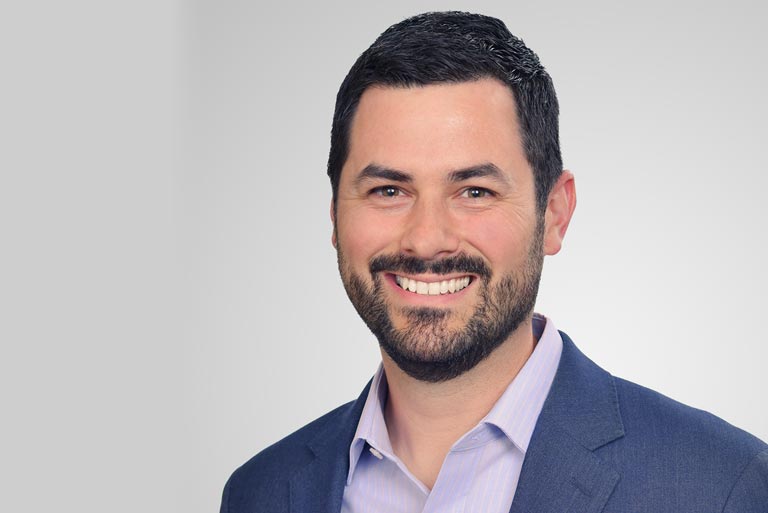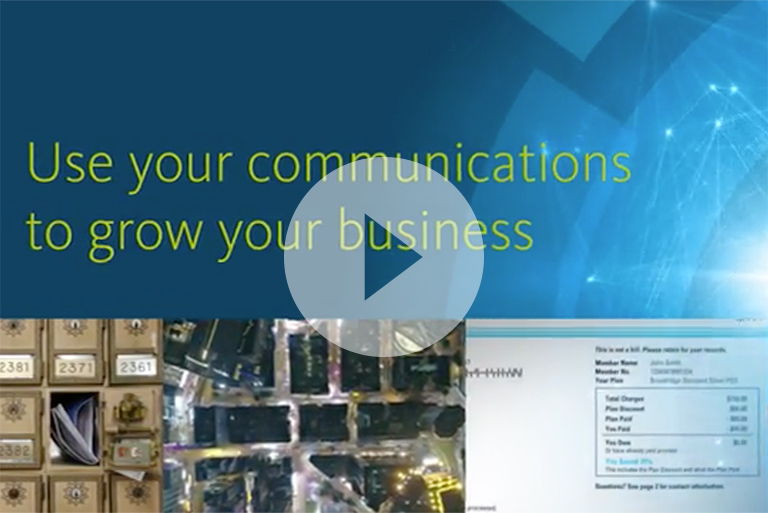Episode 6: “I See (More) Digital in Your Future” with Rob Krugman, Chief Digital Officer of Broadridge
The term “digital transformation” is commonly used when discussing business strategy. The challenge is, digital transformation encompasses many processes and implicates how businesses function. Matt Swain and Broadridge Chief Digital Officer Rob Krugman discuss pushing the digital and physical boundaries of traditional bills and other communications, how AI and voice-driven technologies will change consumer expectations, and the role of data protection in a digital age.
A Trip to the Future: “We organized a design challenge with digital agency Huge to reimagine bills and statements. Our desire was to take a group of really smart people and have them innovate and think about new ideas for these communications. The only creative limitation was that the designs needed to be realistically feasible over the next five or six years. We basically said, ‘Go at it!’ Each team came up with a different approach: some were more focused on the physical experience; some were more data driven; and others were more user experience driven. The ideas varied, but there were quite a bit of synergies too. The feedback from the design challenge has been really positive. We were excited to be recognized as one of the "Most Important Interfaces of 2017" by Fast Company. If you are an organization that sends bills, typically that process is an operational-driven activity. What we uncovered through this process is that bills and statements are a valuable customer touch point. They are an opportunity to connect with your customer, reinforce the value propositions that are important, personalize the experience so it resonates with customers to motivate behavior – from getting them to pay the bill faster to getting them to recommend you to their friends and family. It’s about creating value and having customers recognize it.”
Don’t Fall Into This Trap Along the Customer Journey: “When you talk to a chief marketing officer or a chief digital officer and you challenge them and say, ‘I know 12 touchpoints that are not part of your customer journey today, and they're really important ones,’ they look at you like you may have two or three heads. Then you say, ‘The bill or the statement,’ and they have this quizzical look that says, ‘How in the world did we not think about the bill or the statement as being part of the customer journey?’ The bill is something that we know customers look at because there is a negative action that occurs if they don't; eventually, the service will no longer be there. Modifying the bill into a positive experience where organizations can reinforce their value that they bring to the relationship and have that relationship work for the customer in different ways is really exciting. It requires organizations to think holistically about their communications program. On one hand, you have the marketing program and, on the other hand, you have what we often refer to as essential communications, like bills, statements, notices and letters; they have to work together.”
Measuring Essential Communications: “Five or six years ago, the number one KPI for most organizations for measuring essential communications was paperless savings. Paperless adoption is definitely an important factor, but there are lots of other things to look at as well. Can this communication get people to pay faster? You can make a really strong argument that getting paid faster is worth more than paperless adoption. Can we use this communication to drive people to less expensive channels for customer service rather than calling the call center? Again, another really valuable cost-savings opportunity that could dwarf the cost-savings opportunity around the paperless communication. It’s about looking at the end goal.”
Personalize and Comply: “Bills used to be 10, 15 pages long; maybe now they're 2 or 3 pages long. Why should the bill be more than a page? Let's redesign it from the perspective of the recipient. Focus on what they care about and then highlight that if they want the detail, it’s available on your website. That’s one way to tie the experience of print and digital together. Often, the underlying bill, statement, trade confirm has regulations around it – what needs to be there, what doesn't need to be there. We comply with those requirements, but we can also build experiences on top of the document, which is easier in the digital world. The full document is accessible, but the summary that sits on top of it can be personalized to the recipient, hitting on the pieces of information that the customer cares about.”
George Jetson Capabilities are Here Today: “I think the entire industry is intrigued by the role of AI and voice. The idea is that every consumer is going to have access to a virtual assistant that can perform tasks for them, which may include paying bills, executing trades, all types of things. The question is, how do you take AI and voice-driven technologies and leverage the data we have from their communications? Due to IoT (internet of things), we now have what I call an ecosystem of the home. I imagine walking into my house and the virtual assistant telling me that there's notifications for me. I ask, ‘Hey, what's going on?’ It says, ‘We have three bills that you received today. The utility bill is $200, the mobile bill is this, and your credit card bill came in’ and I ask for my credit card statement to appear on my television. These things seem like George Jetson-like capabilities, but they are viable today.”
Thoughts on GDPR and the CCPA: “Data protection is really important, especially for Broadridge because we capture and manage so much information on behalf of our clients. It’s something that we take very seriously; we not only spend a lot of money on it, but we also really think it through. I think the most interesting thing that's happened over the last four or five years are two privacy regulations; one is in effect and one that's coming. The first is GDPR, which many people are familiar with in the European markets. The second, which was recently passed, is the California Consumer Privacy Act, and there are many other states now following suit. One of the big things that we see with these new regulations is the need to support the right to be forgotten where a customer says, ‘Hey company, forget me and make all the data portable, give it to me.’ That's a really interesting capability because if you think about the way that we manage and store data, it inherently doesn't solve for that. Typically, we're solving for regulations where we need to store content for a certain period of time because the regulation says so. How do you then take that type of requirement and now associate another rule that says the consumer should be able to tell you to delete all their information? We're doing work in this area to support these seemingly conflicting regulations.”
Opportunity’s Knocking: “For many organizations, it's scary to think that customers are now the ones in control of their data because companies have monetized that information in a lot of different ways. But, if you start creating products from the perspective that you need permission from customers to do anything with their information, it starts to open up all types of opportunities. For example, one of the things we're working on is enabling customers to say, ‘These are my delivery preferences. I'd like you to apply them across all the relationships that I have.’ That’s when we start to introduce these concepts of network effect where consumers can simplify the experience of going digital by setting instructions about themselves and then allowing a network of companies to have access to those instructions or not, depending upon what the customer wants to do. The customer defines what they really care about. It actually gives organizations insight into how to communicate with their customers as individuals.”
Never miss an episode: Click the icon to subscribe to the Reimagining Communications podcast on the channel of your choice.












